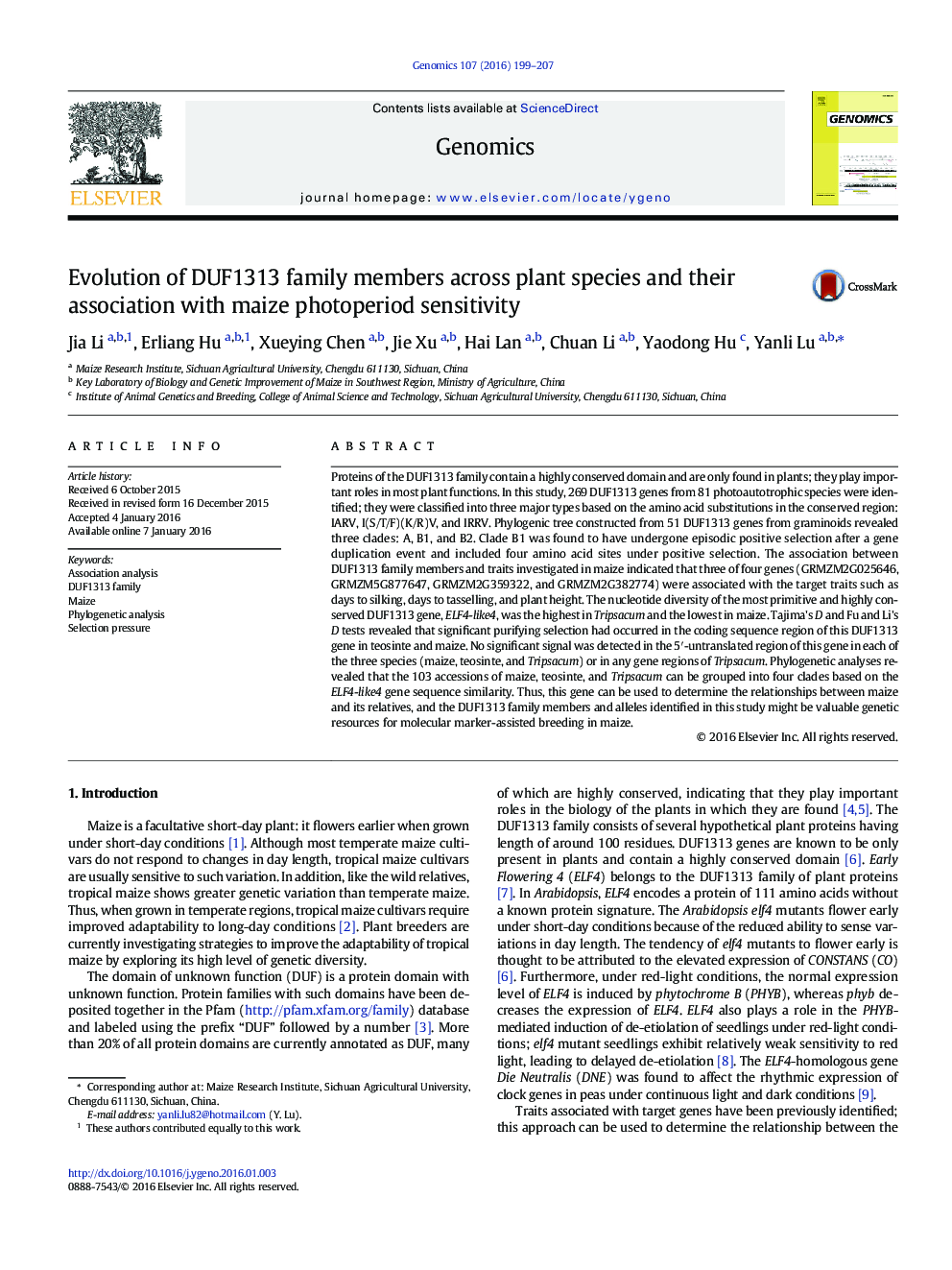| Article ID | Journal | Published Year | Pages | File Type |
|---|---|---|---|---|
| 2820532 | Genomics | 2016 | 9 Pages |
•We identified 269 DUF1313 genes from 81 plant species, which were classified into three types: IARV, I(S/T/F)(K/R)V, and IRRV.•The selection analysis of DUF1313 genes from graminoids revealed occurrence of episodic positive selection in B1 clade.•The association analysis revealed that three maize DUF1313 genes were associated with photoperiod sensitivity traits.
Proteins of the DUF1313 family contain a highly conserved domain and are only found in plants; they play important roles in most plant functions. In this study, 269 DUF1313 genes from 81 photoautotrophic species were identified; they were classified into three major types based on the amino acid substitutions in the conserved region: IARV, I(S/T/F)(K/R)V, and IRRV. Phylogenic tree constructed from 51 DUF1313 genes from graminoids revealed three clades: A, B1, and B2. Clade B1 was found to have undergone episodic positive selection after a gene duplication event and included four amino acid sites under positive selection. The association between DUF1313 family members and traits investigated in maize indicated that three of four genes (GRMZM2G025646, GRMZM5G877647, GRMZM2G359322, and GRMZM2G382774) were associated with the target traits such as days to silking, days to tasselling, and plant height. The nucleotide diversity of the most primitive and highly conserved DUF1313 gene, ELF4-like4, was the highest in Tripsacum and the lowest in maize. Tajima's D and Fu and Li's D tests revealed that significant purifying selection had occurred in the coding sequence region of this DUF1313 gene in teosinte and maize. No significant signal was detected in the 5′-untranslated region of this gene in each of the three species (maize, teosinte, and Tripsacum) or in any gene regions of Tripsacum. Phylogenetic analyses revealed that the 103 accessions of maize, teosinte, and Tripsacum can be grouped into four clades based on the ELF4-like4 gene sequence similarity. Thus, this gene can be used to determine the relationships between maize and its relatives, and the DUF1313 family members and alleles identified in this study might be valuable genetic resources for molecular marker-assisted breeding in maize.
